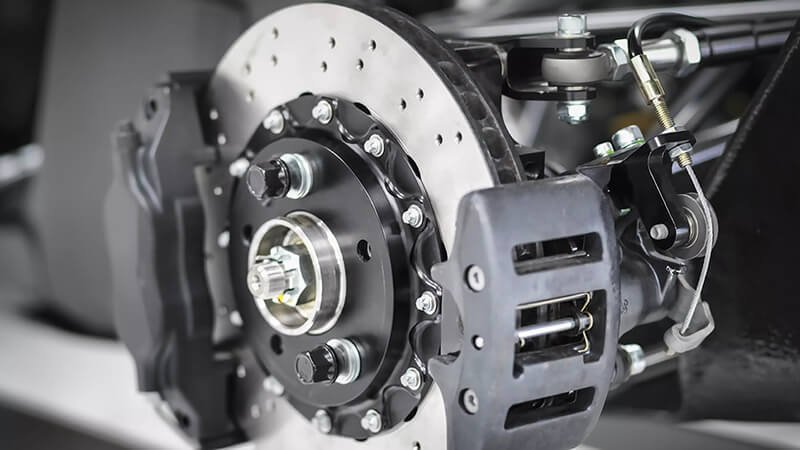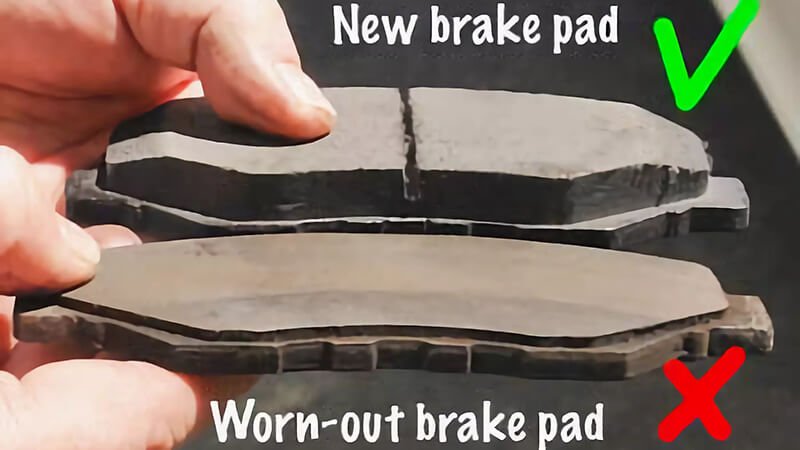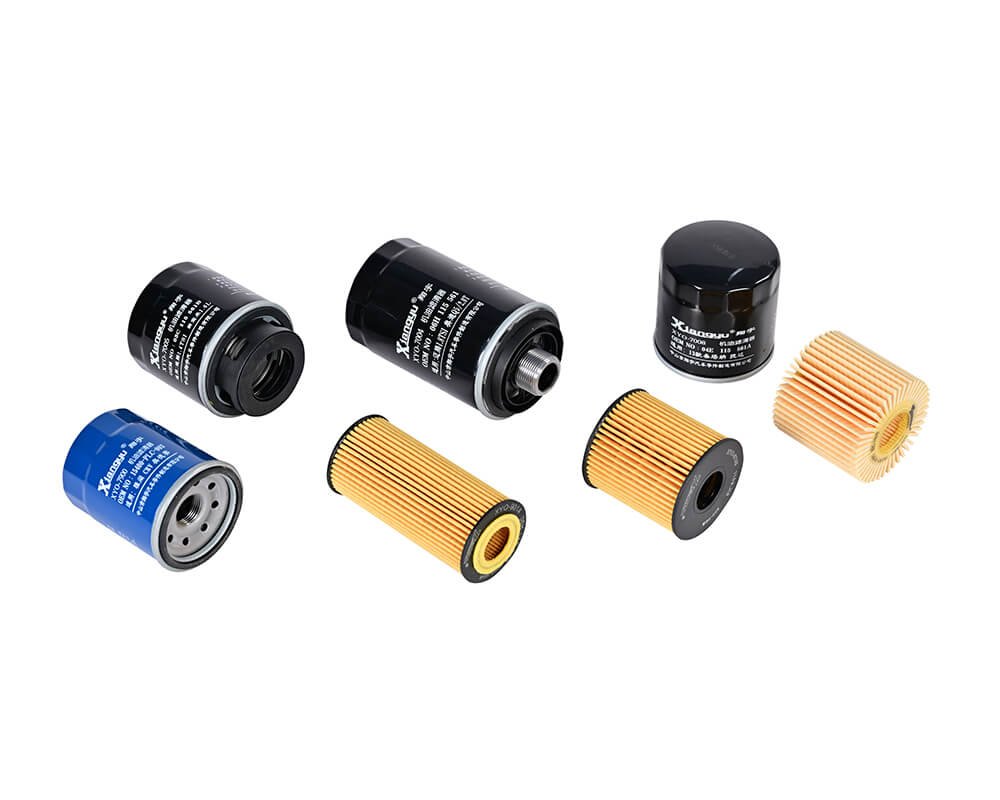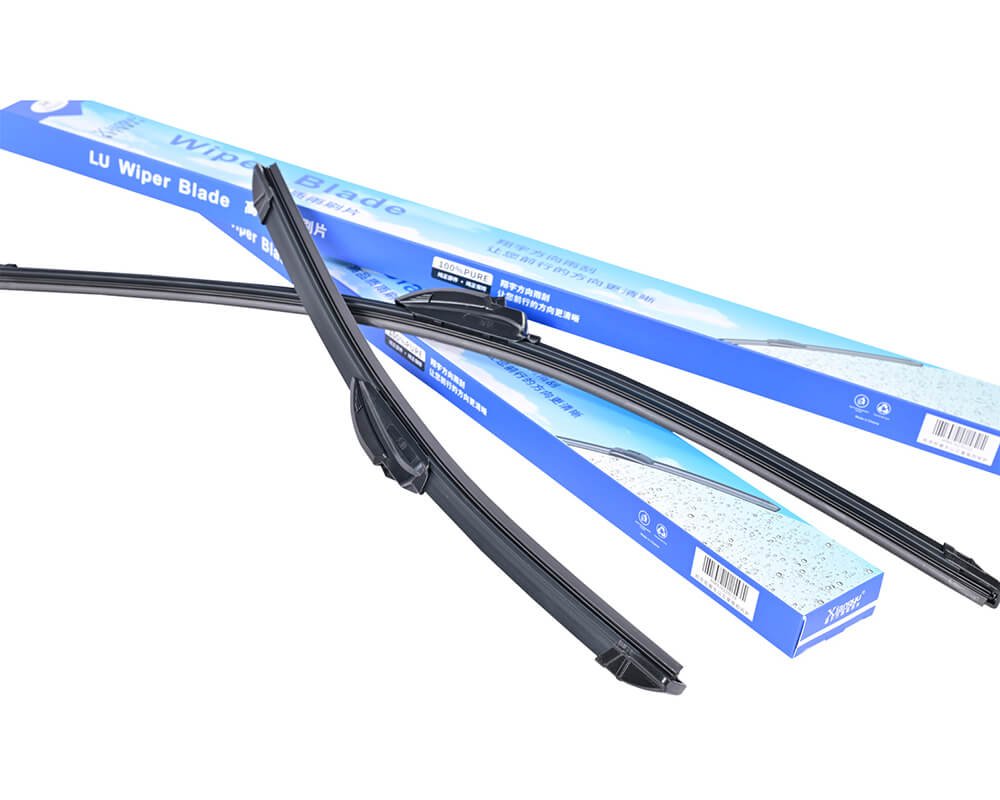Brakes are one of the most essential components of any vehicle. Without a properly functioning brake system, driving becomes not just dangerous but potentially life-threatening. But how exactly do brakes work to bring a car to a stop?
Brake systems work by converting kinetic energy into heat energy through friction, allowing a vehicle to slow down or stop efficiently and safely.
Understanding the fundamentals of how brakes work can help you maintain your vehicle better and appreciate the engineering that keeps you safe on the road.

How Brake System Works Step by Step?
Imagine you're driving down the road and press the brake pedal. What happens next? The process involves a fascinating chain of mechanical and hydraulic actions working together seamlessly.
When you press the brake pedal, the system multiplies force through hydraulics, pushing brake pads against a spinning rotor or drum, converting motion energy into heat to slow the car how hydraulic brakes work1.
Step-by-Step Breakdown of the Brake System
Let’s break this process down into detailed steps to understand the chain reaction involved:
- Driver Input: It all starts when you press the brake pedal. The pressure you apply sets off a mechanical response within the pedal assembly, activating the system brake pedal mechanism explained2.
- Master Cylinder Activation: The force from the pedal compresses the hydraulic fluid inside the master cylinder. This fluid acts as a medium for transferring the braking force efficiently to other parts of the system how master cylinder functions3.
- Hydraulic Pressure Transfer: The pressurized brake fluid flows through a network of brake lines and hoses, evenly distributing the force to all the wheels.
- Caliper and Brake Pad Engagement: For disc brakes, calipers use the hydraulic pressure to push brake pads against the rotor. For drum brakes, wheel cylinders push brake shoes against the drum how disc brake calipers work4.
- Friction Generation: The contact between the pads and rotor (or shoes and drum) generates friction, converting the vehicle’s kinetic energy into heat energy.
- Heat Dissipation: This heat dissipates through the rotor or drum, safely reducing the vehicle’s speed and bringing it to a stop.
Each component plays a critical role, and a failure in even one step can compromise the entire system's effectiveness.
Key Challenges in Brake System Operations
Even with the seamless design, brake systems face several operational challenges:
- Fluid Leaks: Loss of hydraulic fluid can lead to reduced braking efficiency or complete failure.
- Brake Fade: Excessive heat buildup during prolonged braking can reduce the system’s effectiveness.
- Uneven Wear: Components like brake pads wear unevenly, leading to vibrations and reduced performance.
Regular inspections and maintenance address these issues, ensuring the system works as intended.

What Are the Basics of Braking?
Braking is often taken for granted, yet it’s one of the most critical safety features in vehicles. But what are the fundamental principles behind it?
The basics of braking involve friction, hydraulics, and leverage, working together to reduce a vehicle’s speed by transforming kinetic energy into heat energy how braking systems transform energy5.
Core Principles Behind Braking
To truly grasp braking, you need to understand its underlying principles:
- Friction: This is the core mechanism through which brakes work. The interaction between the brake pads and rotors (or shoes and drum) generates the friction required to slow down the wheels how friction works in braking systems6.
- Hydraulics: The brake system relies on Pascal's Principle, which states that pressure applied to a confined fluid is transmitted equally in all directions Pascal's Principle in braking systems7. This allows even a small force on the pedal to generate significant braking force.
- Leverage: The brake pedal and its linkages multiply the driver’s force, ensuring sufficient pressure reaches the hydraulic system how leverage increases braking force8.
Detailed Overview of Brake Components
Here’s a closer look at the main components and their roles:
| Component | Function |
|---|---|
| Brake Pedal | Amplifies driver input to initiate braking |
| Master Cylinder | Converts mechanical force into hydraulic pressure |
| Brake Lines | Distribute hydraulic fluid to calipers or cylinders |
| Brake Pads/Shoes | Create friction against rotors or drums |
| Rotors/Drums | Dissipate heat and provide a surface for friction |
Each component is meticulously designed to work in harmony, ensuring safety and reliability in every braking action.
Common Misconceptions About Braking
Many drivers believe that pressing the brake pedal harder always leads to better braking. However, excessive force can cause brake lock-up in non-ABS systems, leading to skidding and loss of control. Modern ABS systems counteract this by modulating the pressure.

How Do Brakes Work to Stop Your Car?
Braking is more than just pressing the pedal—it’s about the precise interaction of multiple systems. But how do these systems combine to ensure your car stops safely?
Brakes use hydraulics and friction to slow wheel rotation, stopping the car by transforming energy into heat that dissipates safely how brakes convert energy into heat9.
Energy Conversion: The Key to Stopping
When you hit the brakes, the vehicle’s kinetic energy doesn’t just vanish. It’s transformed:
- Kinetic Energy: This is the energy of motion, which is proportional to the vehicle’s speed and weight understanding kinetic energy in braking10.
- Heat Energy: Through friction between the pads and rotor, the kinetic energy is converted into heat. This heat is then dissipated through the rotor’s vents or drum surface.
Factors Influencing Braking Efficiency
Several factors determine how effectively brakes can stop a vehicle:
- Brake Pad Material: High-performance pads made from ceramic or semi-metallic materials offer better friction and durability comparison of brake pad materials11.
- Rotor Condition: Warped or worn rotors can reduce braking efficiency and cause vibrations.
- Road Conditions: Wet, icy, or oily roads reduce the friction between tires and the road, increasing stopping distances how road conditions affect braking distance12.
Understanding these factors helps you anticipate and adapt to changing conditions, ensuring safety in all situations.

How Does the Mechanical Brake System Work?
Mechanical brake systems have been used since the earliest automobiles. While modern systems now primarily use hydraulics, understanding the mechanical approach gives insight into foundational braking technology.
A mechanical brake system relies on cables or levers to directly apply force to brake shoes or pads, creating friction to stop wheel rotation how mechanical brakes create friction13.
Historical Significance of Mechanical Brakes
Mechanical systems were the first type of braking technology used in automobiles. Their simplicity and reliability made them ideal for early cars, though they’ve since been replaced in most modern vehicles history of mechanical brake systems14.
Key Features of Mechanical Brake Systems
- Direct Force Transmission: The driver’s force is transmitted directly through cables or levers, without fluid.
- Applications: Primarily used in handbrakes and emergency brake systems due to their simplicity.
- Limitations: Mechanical systems require greater effort to achieve the same braking force as hydraulic systems, making them less efficient for modern vehicles comparison between mechanical and hydraulic brakes15.
Modern Use of Mechanical Brakes
Today, mechanical brake systems are largely confined to specific applications, such as:
- Parking Brakes: The mechanical handbrake ensures the vehicle remains stationary when parked.
- Bicycles and Motorcycles: Simpler mechanical systems are common due to their lightweight design.
Though less efficient than hydraulic systems, mechanical brakes remain an important safety feature, especially as a backup system.

Conclusion
Brake systems are a marvel of engineering that combine physics, hydraulics, and precision to ensure safety on the road. From basic components to advanced systems, understanding how they work helps you appreciate the complexity and importance of maintaining them. By keeping your brakes in top condition, you guarantee smoother rides and safer journeys for yourself and others.
Contact us to get your best brake pads for your business.
-
Learn how hydraulic systems amplify braking force for effective car deceleration. ↩
-
Understand the mechanical process that initiates braking in vehicles. ↩
-
Discover how the master cylinder distributes hydraulic pressure in a brake system. ↩
-
Gain insights into how calipers press brake pads against the rotor. ↩
-
Learn the physics behind energy transformation during braking. ↩
-
Understand the role of friction in stopping a vehicle effectively. ↩
-
Discover the science behind hydraulic pressure in braking systems. ↩
-
Learn how brake pedal mechanics amplify driver force. ↩
-
Learn the physics behind energy transformation during braking. ↩
-
Understand how a vehicle’s motion energy affects braking performance. ↩
-
Compare brake pad materials for durability and performance insights. ↩
-
Learn how environmental factors impact braking effectiveness. ↩
-
Understand how mechanical brake systems generate the necessary friction to stop a vehicle. ↩
-
Learn about the origins of braking technology and its historical significance. ↩
-
Compare the advantages and disadvantages of mechanical and hydraulic braking systems. ↩













